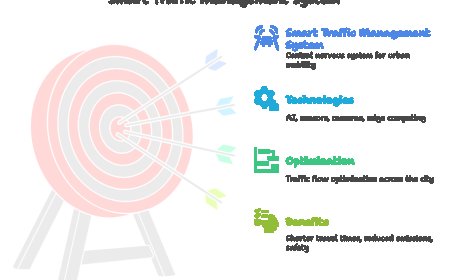Top Strategies for Implementing a Dark Web Scanner in UK SMEs
Prevent cyber threats by using dark web scanning and remote access support to monitor data breaches, secure credentials, and boost your IT defences.
In todays digital-first world, data breaches and cyberattacks are no longer just problems for large corporations. Small and medium-sized enterprises (SMEs) across the UK are increasingly becoming prime targets for cybercriminals. With limited resources, minimal in-house IT staff, and growing digital footprints, SMEs can unknowingly leave gaps in their defences. One of the most critical yet often overlooked areas is dark web monitoring.
A dark web scanner can help businesses identify and mitigate threats before they escalate. But how do you implement one effectively without overwhelming your IT team or breaking the bank? In this blog, we explore the best strategies for UK SMEs looking to strengthen their cybersecurity through dark web monitoring.
Why UK SMEs Are Vulnerable to Dark Web Threats
SMEs in the UK face several challenges when it comes to cybersecurity. Many dont have dedicated security teams, rely heavily on cloud services, and often delay updates or upgrades due to budget constraints. These factors create ideal conditions for cybercriminals to exploit.
Cyber attackers frequently trade sensitive information like email passwords, customer data, and payment details on the dark web. If your business credentials are exposed and youre unaware, it could lead to identity theft, financial fraud, reputational damage, or even compliance violations under regulations like GDPR.
According to the UK governments Cyber Security Breaches Survey, nearly 32% of small businesses experienced cyber breaches or attacks in the past year. Many of these stemmed from exposed data and weak authentication practices. This highlights the urgent need for affordable, automated tools such as dark web scanners.
What Is a Dark Web Scanner and How Does It Work?
Adark web scanneris a digital tool that scans the hidden corners of the internet where cybercriminals buy, sell, and exchange stolen data. These scanners monitor underground forums, marketplaces, and encrypted networks to detect if your companys sensitive information is being traded.
These tools can identify:
- Leaked employee credentials (usernames and passwords)
- Compromised email accounts
- Breached customer data
- Exposed company domains
- Payment card information or intellectual property
When a scanner detects a match, it sends alerts so your team can take immediate actionwhether thats changing passwords, alerting clients, or enhancing existing security measures.
Top Strategies for Implementing a Dark Web Scanner in UK SMEs
Implementing dark web monitoring doesnt have to be complex or expensive. The key is to follow a clear, strategic process that suits your business size, risk level, and internal capabilities.
1. Start with a Dark Web Risk Assessment
Before choosing any tools, evaluate how exposed your company already is:
- Has your company been breached before?
- Are employees using strong passwords?
- Do you reuse passwords across systems?
A dark web risk assessment helps you understand what data is already vulnerable. Some security providers offer free assessments that scan known breach databases for your companys email domains. This baseline is critical to building your monitoring plan.
2. Choose the Right Dark Web Monitoring Tool
There are a variety of dark web scanners available, ranging from basic platforms to advanced enterprise tools. When selecting one, consider:
- Real-time monitoring and alert systems
- GDPR compliance and UK data centre locations
- Support for multiple domains and user accounts
- Easy integration with your existing systems (e.g., Microsoft 365, Google Workspace)
- Customer service availability (preferably UK-based)
For many SMEs, subscription-based platforms or managed cybersecurity providers offer the best balance of features and affordability. Avoid free tools that only scan known data leaks without live monitoring.
3. Involve Your IT Team or Outsource to Experts
If your business has in-house IT support, include them from the start. They can help with installation, alert configuration, and integration with security protocols. If not, consider partnering with a managed IT support provider that can implement and manage the scanner for you.
Many SMEs also benefit fromremote access supportduring setup and daily use. With remote monitoring, IT partners can act quickly if the system flags a breach, even outside office hours.
4. Enable Continuous Monitoring and Real-Time Alerts
Cyber threats evolve daily. Thats why continuous scanning is essential. A one-time scan wont protect your business from new data leaks or breaches happening tomorrow.
Ensure your dark web scanner:
- Monitors 24/7
- Sends automatic alerts
- Allows escalation to the right people in your business
Set clear protocols for what to do when alerts come inwho responds, what actions to take, and how to follow up.
5. Integrate Monitoring into Employee Cybersecurity Training
Human error is one of the biggest cybersecurity risks for SMEs. Teaching staff how their credentials can end up on the dark web is crucial.
Use real-life data (safely anonymised) from your scanner to show examples in training sessions. Reinforce key practices such as:
- Using strong, unique passwords
- Avoiding public Wi-Fi for work-related tasks
- Reporting suspicious emails or login prompts
- Enabling multi-factor authentication (2FA) wherever possible
Making dark web monitoring part of your staff training ensures everyone is aware and accountable.
6. Create a Breach Response Plan
If your scanner detects exposed data, time is critical. Prepare an action plan in advance:
- Change all affected credentials immediately
- Lock down compromised systems
- Inform your data protection officer (DPO) if applicable
- Notify customers or suppliers as needed
- Report significant breaches to the Information Commissioners Office (ICO)
Keep records of all actions taken. This not only helps improve your future response but also ensures you remain compliant with regulatory standards.
Common Pitfalls to Avoid
While implementing dark web monitoring is a smart move, some mistakes can reduce its effectiveness. Avoid the following:
- Relying solely on outdated, free tools
- Ignoring alerts or not checking reports regularly
- Not training staff on security basics
- Treating the scanner as a set and forget solution
- Failing to respond fast enough to threats
Cybersecurity is ongoing, and your dark web scanner should be part of a broader IT security strategy.
Conclusion
As cyber threats become more advanced, UK SMEs must act proactively to safeguard their data and reputation. A dark web scanner is a smart, scalable solution that helps detect data leaks early, before they escalate. By assessing risks, selecting the right tool, involving your IT support or managed service provider, and integrating it into your broader cybersecurity strategy, you can greatly reduce your exposure. Adding remote access support further streamlines implementation, offering round-the-clock peace of mind. Renaissance Computer Services Limited provides expert guidance and tailored implementation support, helping UK SMEs strengthen their cybersecurity without straining internal resources.
































